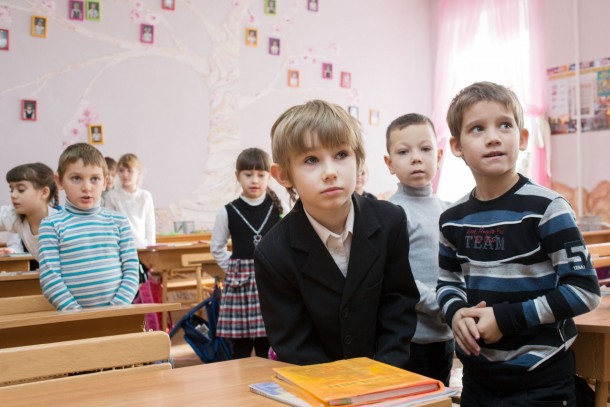10.03.2016 | Insight
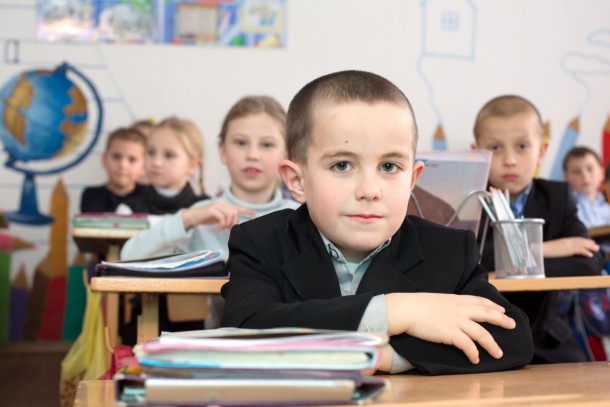
“This is where we are going to extend our school with a new annex. At the moment we are doing the groundwork, planning and taking care of the technical details. By the autumn our pupils will be benefiting from fresh, new spaces. We’re looking forward to it,” explains Galina Lugova, as she hurries on. It is impossible to mistake her enthusiasm as she shows us around.
One day prior to our visit to Antonivka, Galina was named as Ukraine’s best teacher, which has turned her into an overnight superstar. The award ceremony in Kiev was covered on national TV and by various national newspapers. The teaching profession still enjoys a high status in Ukrainian society, which is also reflected in the courtesy shown by pupils toward their teachers. Galina’s energy is contagious as we take a tour of the school. She willingly talks about their attempts to spruce up the physical environment and do away with the Soviet air that previously characterised the school’s atmosphere. The walls have been decorated with colourful paintings and beautiful frescoes that reflect the theme guiding teaching in each individual class room. The day of our visit falls during the annual environment week, which means the majority of classes are about biology, science, geography and environmental conservation in daily life. In one of the class rooms there
is an ongoing discussion about disability and exclusion.
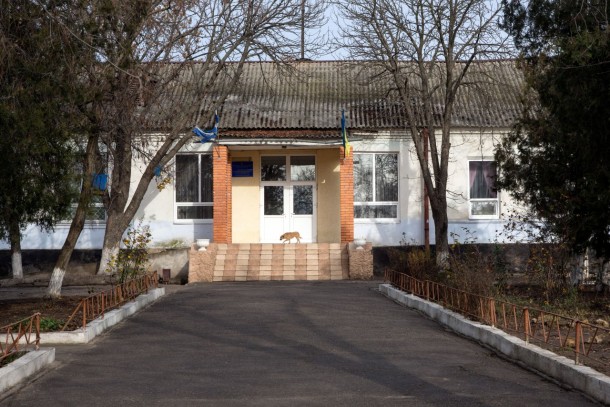
“It’s important to raise ethically difficult issues and teach the pupils the importance of empathy. Being able to empathise with the situations of other people is everything,” says Galina.
Antonivka is located on the outskirts of the city of Kherson in south-eastern Ukraine. Antonivka has a past as a small village next to the main route to Crimea. The town has now firmly taken root in the former agrarian idyll, and the village has been transformed into a suburb. The proximity to the Crimean peninsula and the conflict in eastern Ukraine have also left their marks on the school environment. Out of the school’s 270 pupils, many have their origins in the east of the country. Hundreds of families have been forced to flee to the safety of Kherson and settle down in a new location. The influx of new students means in turn that there is barely room to swing a cat in the 145 year old school.
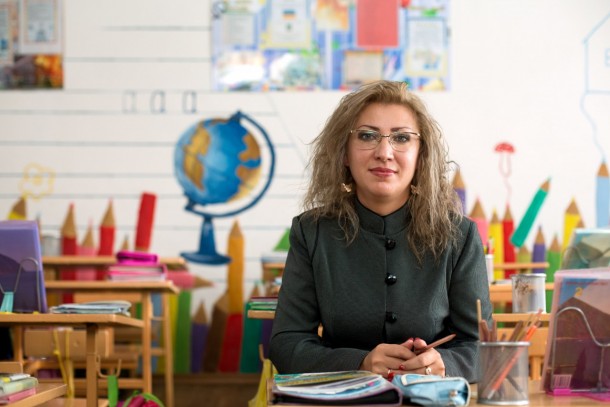
In order to address the humanitarian crisis in Ukraine, the Nordic countries have established the Nordic Energy Efficiency and Humanitarian Support Initiative fund, which grants financial support to projects that aim to develop infrastructure in the south and east of the country where there is a high percentage of refugees. The fund is administered by NEFCO, which is also responsible for tendering competitions, the procurement of services and the disbursement of funds to ensure projects are realised. The school project in Antonivka has been funded through an earmarked grant from the Finnish Government, while the city of Kherson is covering the costs of expanding the water and sewage systems, as well as the necessary ground works that are required to ensure that satisfactory infrastructure is in place before the new school building is assembled.
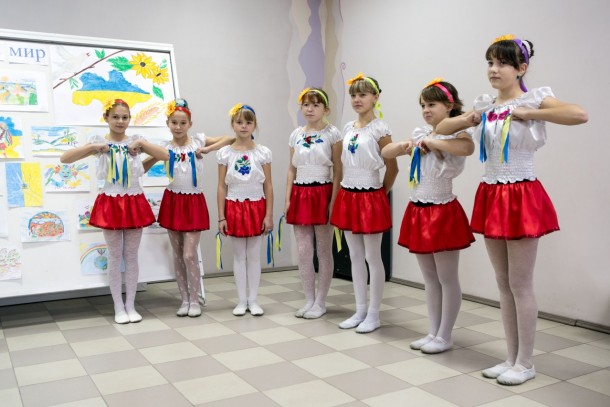
“We are very grateful for the support offered by Finland,” says Tamara Vezeschack, an adviser from the city’s education department, when she joins our tour.
The new school building that will open in the autumn of 2016 will be classified as a green building due to its energy efficient design and use of thermal insulation. The building elements are manufactured by the Finnish firm Elemenco, which won a tendering competition run in the autumn of 2015. Once the project is completed, the school will be able to accept a total of 440 pupils. It is not just the students and teachers who will benefit from the investment.
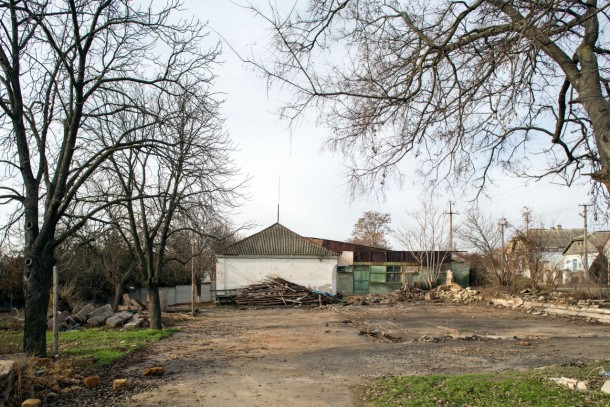
Part of the building will also be used as a service centre providing social and psychological support to refugees living in the area. Armed conflicts traumatise people and means that new support systems are required to provide help to those who are bearing painful experiences and memories.
“It has been incredibly encouraging and meaningful to work on this project. Without the grant from Finland, it would have been difficult for the municipality to develop the infrastructure they need to give shelter to refugees living in the region,” says Maria Maliniemi, an Investment Manager at NEFCO.
Footnote: Wall sections from Kaavi in north-eastern Finland were delivered to Antonivka in March 2016.
